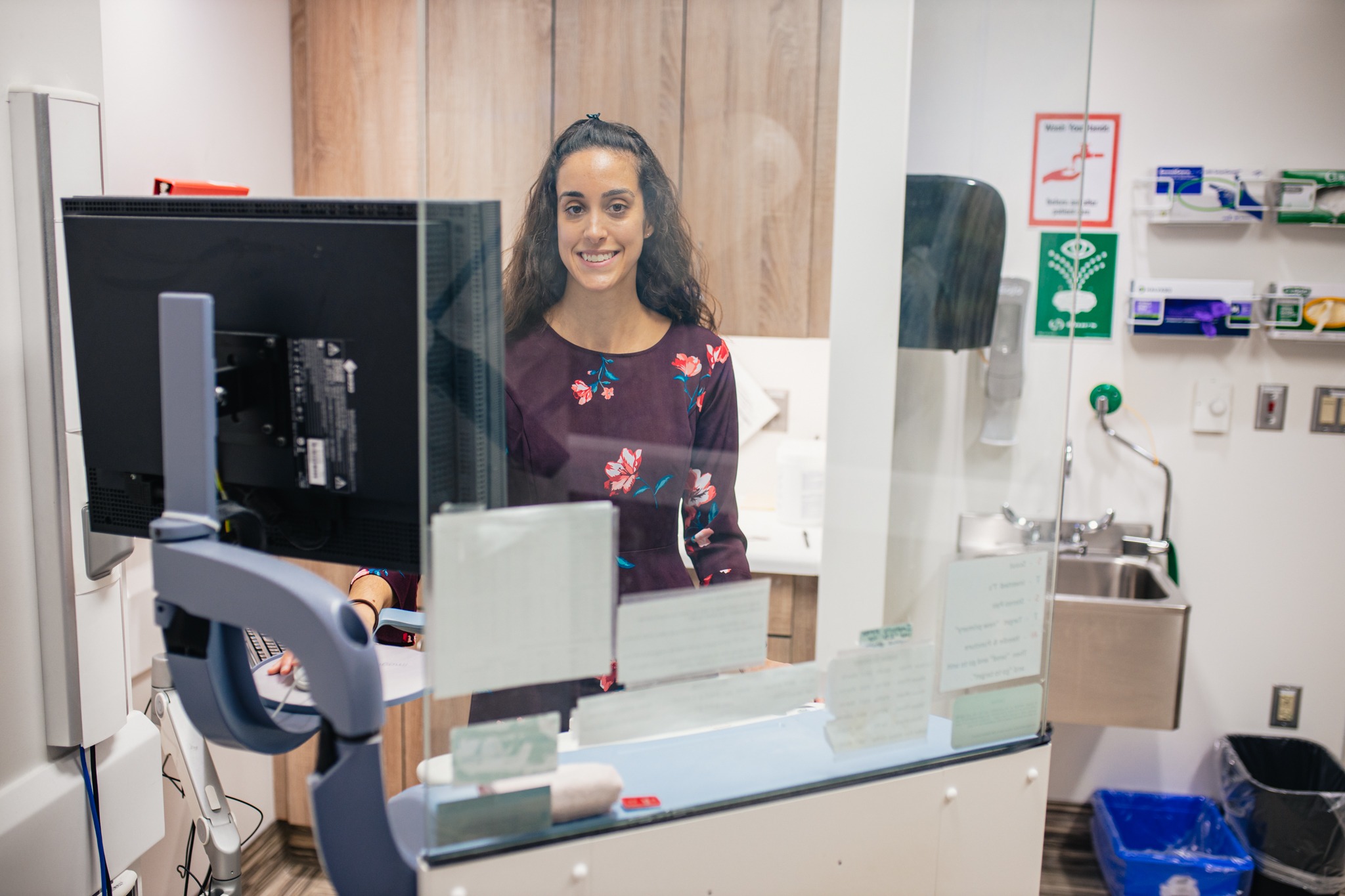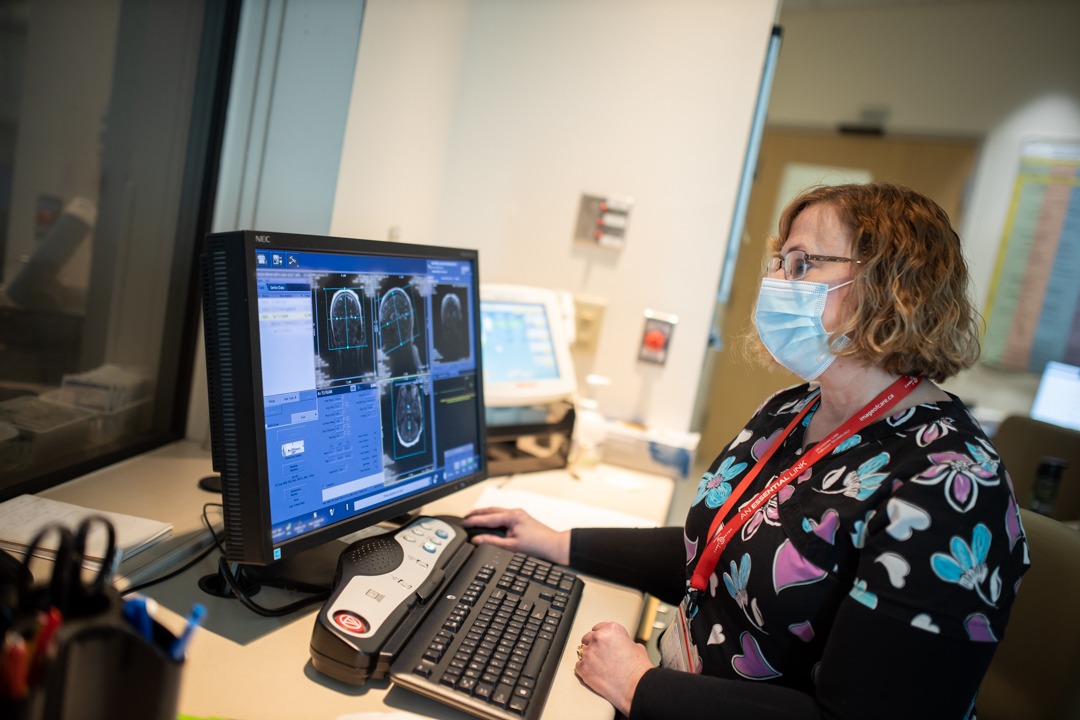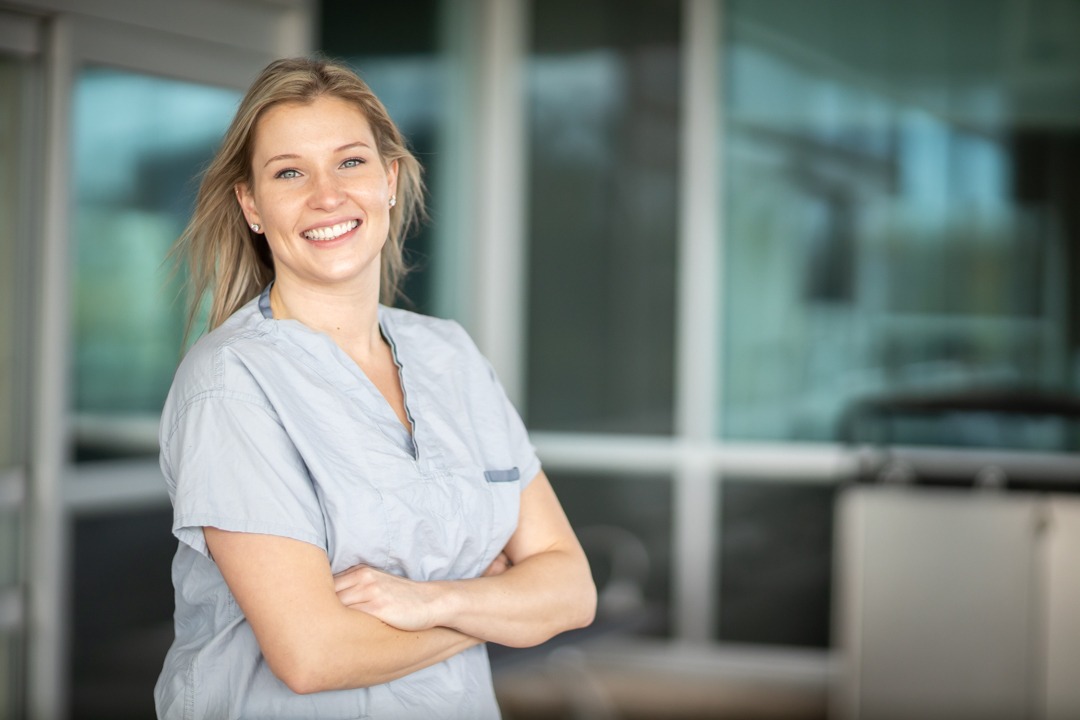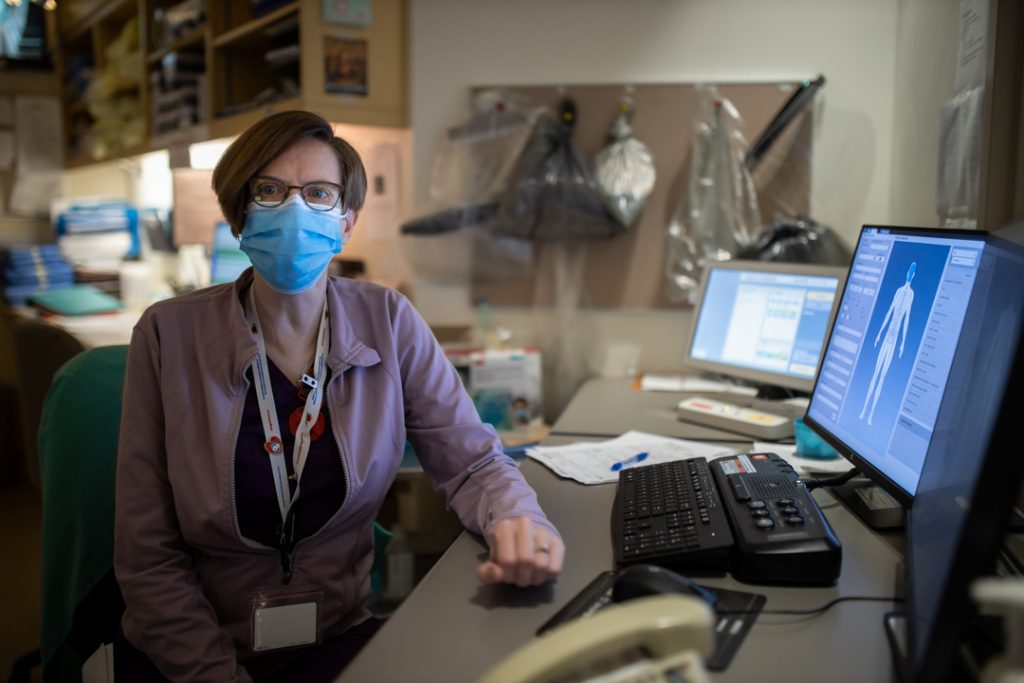
Introducing a Senior MRT in Computed Tomography
This profile is part of our Introducing MR Tech series to highlight the work of our diagnostic imaging unit.
It’s personal for Colleen Hilbert.
The senior medical radiation technologist in computed tomography (CT) is in her 19th year at Hamilton Health Sciences (HHS). Based at the Juravinski Hospital and Cancer Centre, she was motivated to work in the field of diagnostic imaging (DI) because of her own experience with patient care as a child.
“I was born with congenital hip dysplasia. My hips were malformed when I was born,” explains Hilbert. “When I started to walk, my mom noticed I wasn’t walking like other little kids. At eighteen months years old, I spent a year-and-a-half at SickKids Hospital and had three open surgeries during that time. The doctors told my mom I had a 50 per cent chance of walking. I learned to walk again when I was four years old.
“I always wondered what those people behind the machines were doing. That curiosity has led me to where I am now.”
How did you start out working at HHS?
I started out thinking I was going to get some work experience and then move back to my small town. I’m originally from a town off Highway 4 between London and Owen Sound.
Two years at HHS turned into training, then it turned into five years of balancing work across interventional radiology, X-ray, and CT. I couldn’t keep up with everything, so I decided CT was the best fit for me and I’ve been there ever since.
Our decisions are based on knowledge, skills, and the judgement of what we can and can’t handle. The only person to know that is me. So that’s how I decided to move forward with CT.
What are some daily responsibilities of someone in your position?
“We’re the eyes of the hospital.”
To some patients, it may look like I’m just here pushing a button but I have 50 other things going on in my head – remind the radiologist to look at something, do I need to look at this right away or put it in a different priority. It might look like I’m “just” taking pictures, but we take very important pictures and there’s a reason why we’re picky about the pictures we take. I say to my trainees, “half the time we’re the eyes of the hospital.” Without these images, they’re guessing.
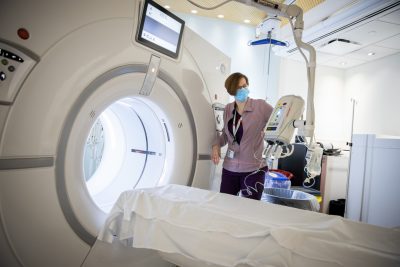
Hilbert says her own experience as a patient helps to guide her in caring for her patients.
This role requires someone to be very computer savvy. Everything is documented on a computer. There are a lot of other skills involved in CT, too. Teamwork is a big part of it. We’re working with porters, nurses, and radiologists. We also work closely with registered practical nurses who help our patients who may be waiting. They make sure our patients are safe and looked after.
There are so many different facets to the job. We teach students, which is always nice because they keep us on our toes and remind us what it’s like to be new again.
What are some of the challenges that come with your position? The rewards?
Everyone is different, every day is different and you never know what the day is going to bring or how someone is going to react.
One of the challenges is keeping certain patient groups apart. We see a lot of inpatients and outpatients, patients from the intensive care unit, the critical care unit – we see just about everyone. We have to keep up with all the changes that affect different departments in their respective ways. We need to be sure not to have patient appointments together because of COVID rules.
This is also a job where you need to keep learning. The College of Medical Radiation and Imaging Technologists of Ontario is our governing body. They mandate 25 hours of continuing education every year. This is not a profession where you can just get your degree and get your job – you must continue learning.
As for the rewards, there are so many. I’ve seen some patients go through serious diagnoses and come through it. When they have cancer, they see us for a set period of time, then eventually graduate to every two years, then every five years.
Just being someone who can make our patients feel like people is rewarding. I’ve been a patient myself several times and it colours how I do my job. It makes it a whole lot easier for our patients to understand what’s happening, what the next step is if things go well and what the next step is if things don’t go well.
What do you like about working in your department?
The crew I work with is extremely flexible. The pandemic is affecting us all differently in each department, but we’re all in the same boat. We’re very supportive of each other. DI is one of those places where we have really close-knit teams. We have five little areas of our own; X-Ray, CT, MRI, ultrasound, and mammography. We’re very supportive of each other.

